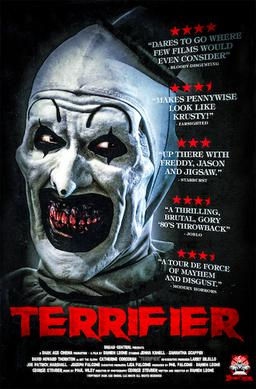Deep Red (1975) review
- Jeremy Kelly
- Oct 14, 2021
- 4 min read
14. Deep Red (1975)
Directed by: Dario Argento
Produced by: Salvatore Argento
Screenplay by: Dario Argento, Bernardino Zapponi
Starring: David Hemmings, Daria Nicolodi, Gabriele Lavia, Macha Méril, Clara Calamai

Before I start, no, this movie is not a satire of far-right conservatism; sorry if the title is misleading. After bursting onto the scene with his early giallo hits, director Dario Argento took a break from the genre to helm the comedy “The Five Days” before returning to the fold with “Deep Red” in 1975. It’s about an English musician named Marcus (David Hemmings) who witnesses a murder, and becomes caught up in the investigation to learn who the killer is. Featuring some impressively staged cinematography and a thoroughly haunting vibe, this is often considered Argento’s best film; it has solid character interactions that result in an interesting mystery.
The opening features a silhouette stabbing another silhouette to death in a living room, and the knife falling to the floor at a child’s feet. Cut to 20 years later, where we see a psychic medium named Helga (Macha Méril) sensing someone with murderous thoughts at a parapsychology conference, also apparently hearing a spooky child’s song. That night, a figure with black gloves breaks into Helga’s apartment and kills her. At the same time, Marcus—who lives in the same building—is down on the street, where he meets his alcoholic friend Carlo (Gabriele Lavia); he spots the dying Helga through a window, but is too late to help. He’s photographed as a witness by reporter Gianna (Daria Nicolodi), and starts being stalked by the killer at his home. Aided by Gianna and Helga’s colleague Professor Giordani (Glauco Mauri), Marcus starts investigating, digging into the connection between the song, an old abandoned house, and a disturbing mural.

David Hemmings plays Marcus as a not-so-typical movie hero; he’s kind of squirmy, brash and somewhat sexist. But he also has this concentrated inquisitiveness that helps guide you along in this process. If you’ve seen “The Bird with the Crystal Plumage,” a lot of this might seem familiar, but it’s no less engaging, and that applies to scenes with Giordani as well. I really enjoy the relationship between Marcus and Gianna; the playful sass and jolts of personality make it feel like something out of an old Howard Hawks comedy, particularly when they’re crammed into Gianna’s crappy car or squaring off at arm-wrestling. If anything, I wanted more scenes with the two of them; Gianna kind of disappears for large portions of the run time. She’s played by Daria Nicolodi, Argento’s future wife; they first met during casting, were married during filming, and collaborated on his next five films, even after their marriage ended in 1985. Meanwhile, there’s great pathos in scenes with Marcus and Carlo, who’s on his own self-destructive path that helps keep the movie strangely grounded, but in a good way.
Like the best of any mysteries, it keeps you truly invested in the methods and lengths the characters go to: where they travel, the angles they view a room, any detail that seems even slightly out of place. You feel like it’s actually making you smarter the more they figure this out; the suspense, meanwhile, almost never lets up, with excellent stalking sequences at Marco’s apartment and when he’s poking around the old house. I also love some of the tracking and extreme close-up shots, particularly the ones of Marco’s sweaty forehead. This movie also represents Argento’s first musical collaboration with the rock band Goblin—even though Pink Floyd was a prior choice—and the score is very rhythmic and creepy at times, though a tad too warbling in some areas.

The kills aren’t especially gory, but two of them are notable for how torturous and bizarre they are. One of them has Giordani being distracted by this freaky mechanized doll before being murdered, and the other features author Amanda (Giuliana Calandra), who wrote a local folklore book that introduces Marcus to the house; she’s submerged in scalding bathwater, serving as a clear inspiration for a similar death in “Halloween II.” Reportedly, Argento and co-writer Bernardino Zapponi thought specifically of painful ways to die for this movie. The effects were done by Carlo Rambaldi, who went on to win Oscars for the 1976 “King Kong” remake, “Alien” and “E.T. the Extra-Terrestrial,” and they complement the rest of the aesthetics to create a thrilling third act.
So for the most part, “Deep Red” succeeds in terms of plot intrigue, sound design and pure tension; the only weak aspects are some of the editing decisions. In general, the film is cut and crafted well; but sometimes it seems like they’re deliberately trying to mislead you in a way that doesn’t really make sense. Just watch the scene where Marcus is rescued from the burning building, and tell me that’s not a cheap misdirection trick. But honestly, they’re minor hiccups in the grand scheme of things; they don’t stop this from becoming one of the great giallo films of the decade. I don’t necessarily think it’s Argento’s best movie; I still probably prefer “Suspiria” or “Bird,” but the visuals, dialogue and chemistry are impressive any way you look at it.
My rating: 9/10





Comments